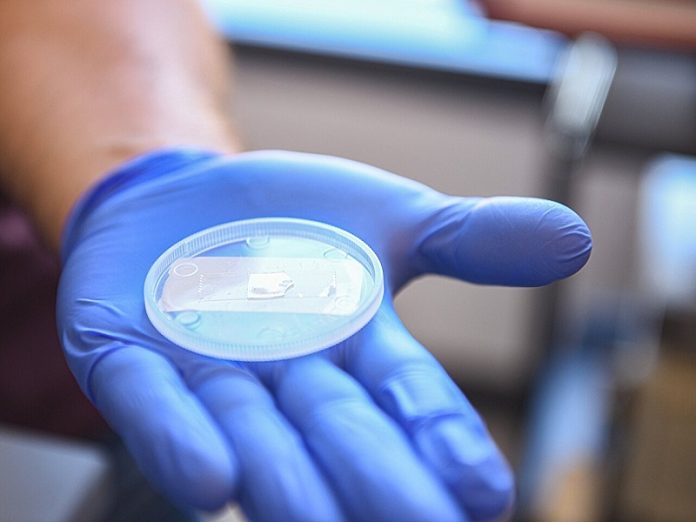
A sample of the sapphire. Credit: The University of Texas at Austin.
Imagine a phone screen that never gets scratched, glasses that don’t glare, or a car windshield that stays clear of dust and fog.
These could soon become reality thanks to new research on a special material called sapphire.
Scientists at The University of Texas at Austin have found a way to make sapphire even better by creating tiny structures on its surface.
These “nanostructures” give sapphire new abilities, making it more useful for everyday products.
Sapphire is already known for being extremely hard to scratch. That’s why it’s used in high-end watches and even some smartphone screens.
However, because it’s so strong, sapphire is also difficult to shape into useful forms, especially at small scales.
To solve this problem, researcher Chih-Hao Chang and his team developed sapphire-based nanostructures that keep many of sapphire’s strengths while adding exciting new features. Their findings were published in [_Materials Horizons_.](https://pubs.rsc.org/en/content/articlelanding/2025/mh/d4mh01844c)
While these new nanostructures are not quite as scratch-proof as regular sapphire, they are still as strong as tungsten or traditional glass. But their real power comes from their ability to resist fog, dust, and glare—all while staying incredibly durable.
The team designed these nanostructures based on patterns found in nature. For example, they copied the shape of a moth’s eye to improve how light passes through, reducing glare. This could make phone and camera screens easier to see in bright light.
The surface of these nanostructures can also repel water. When treated in one way, they attract water and prevent fog, like bathroom mirrors that stay clear. When treated another way, they repel water completely, causing droplets to roll off—just like how lotus leaves stay dry in the rain.
This discovery has the potential to improve many products we use every day. Future smartphones could have tougher, clearer screens. Glasses and car windows could stay fog-free. Camera lenses wouldn’t get glare, and windshields wouldn’t collect dust.
But the benefits go beyond daily life. In space missions, for example, equipment can get covered in dust, which makes it harder to function. These self-cleaning sapphire surfaces could keep important tools dust-free without needing water for cleaning.
According to researcher Andrew Tunell, their special sapphire surfaces can stay 98.7% dust-free just by using gravity. That’s a major improvement over current dust-cleaning technology.
The research team is now working to make this technology even better. They are finding ways to produce these sapphire nanostructures on larger surfaces and improve their durability. They also want to explore new ways to use them in real-world applications.
With these advancements, sapphire could become a game-changer in technology, offering stronger, clearer, and more reliable materials for everything from electronics to space travel.